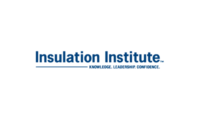These Healthier Insulations and Sealants also Improve Energy Efficiency

Addressing concerns that some insulation products release unhealthy chemicals, Healthy Building Network (HBN) released Making Affordable Multifamily Housing More Energy Efficient: A Guide to Healthier Upgrade Materials. This report, a collaboration between HBN, the Energy Efficiency for All (EEFA) initiative, and other partners, reveals ways that anyone can improve energy efficiency and reduce toxic chemical exposures.
Making Affordable Multifamily Housing More Energy Efficient: A Guide to Healthier Upgrade Materials highlights chemicals of concern commonly found in many insulation and sealant products, suggests healthier material options for weatherization programs, and provides information and inspiration for anyone interested in healthier product options. The study includes relative cost information, performance characteristics, and installation and code considerations. It also introduces a discussion of policies that may impact material decisions and offers specifics to encourage the use of healthier materials in multifamily energy efficiency upgrades.
“Energy efficient buildings are crucial to the long term well-being of people and the planet that we all share. Yet, insulation and air sealing materials, two of the most common interventions performed in energy-efficiency upgrades, can introduce many chemicals of concern into buildings. As we work to improve the energy efficiency of our buildings, we must also weigh the potential health impacts of building materials on workers, occupants, and the broader environment. This report provides important details and recommendations for affordable, multifamily energy efficiency upgrades and the broader construction market,” said Rebecca Stamm, HBN Senior Researcher and a lead author of the report.
Among the findings:
- Chemicals of highest concern in insulation and sealant products include formaldehyde-based binders, halogenated flame retardants, orthophthalates, isocyanates, and organotins.
- A wide range of insulation products are currently being used in multifamily energy-efficiency upgrades. Foam products like spray polyurethane foam (SPF), which contain many chemicals of concern, were found to be common for certain applications. In each of these applications, however, alternative, less hazardous products (such as blown or batt fiber glass) were also used and were often equally common.
- Many products toward the top of the health-based ranking are affordable and readily available. Commonly used fiber glass and cellulose insulations are some of the highest ranked from a health perspective, and have the lowest installed cost for any given R-value. While the R-value per inch is higher for many foam products, the R-value per dollar is not.
- Polyurethane spray foam sealants have the lowest relative cost to seal a given space because of their low density, but they contain many chemicals of high concern. Some non-isocyanate (non-polyurethane) spray foam sealants are becoming available, but because there is little or no public disclosure of their contents, we do not yet know whether they are less toxic than polyurethane spray foam sealants. Prefer caulk-type sealants or foam sealing products that are not reacted on site.
This report supplements HBN’s ongoing focus on insulation and sealants in affordable housing in its HomeFree project.
Looking for a reprint of this article?
From high-res PDFs to custom plaques, order your copy today!





